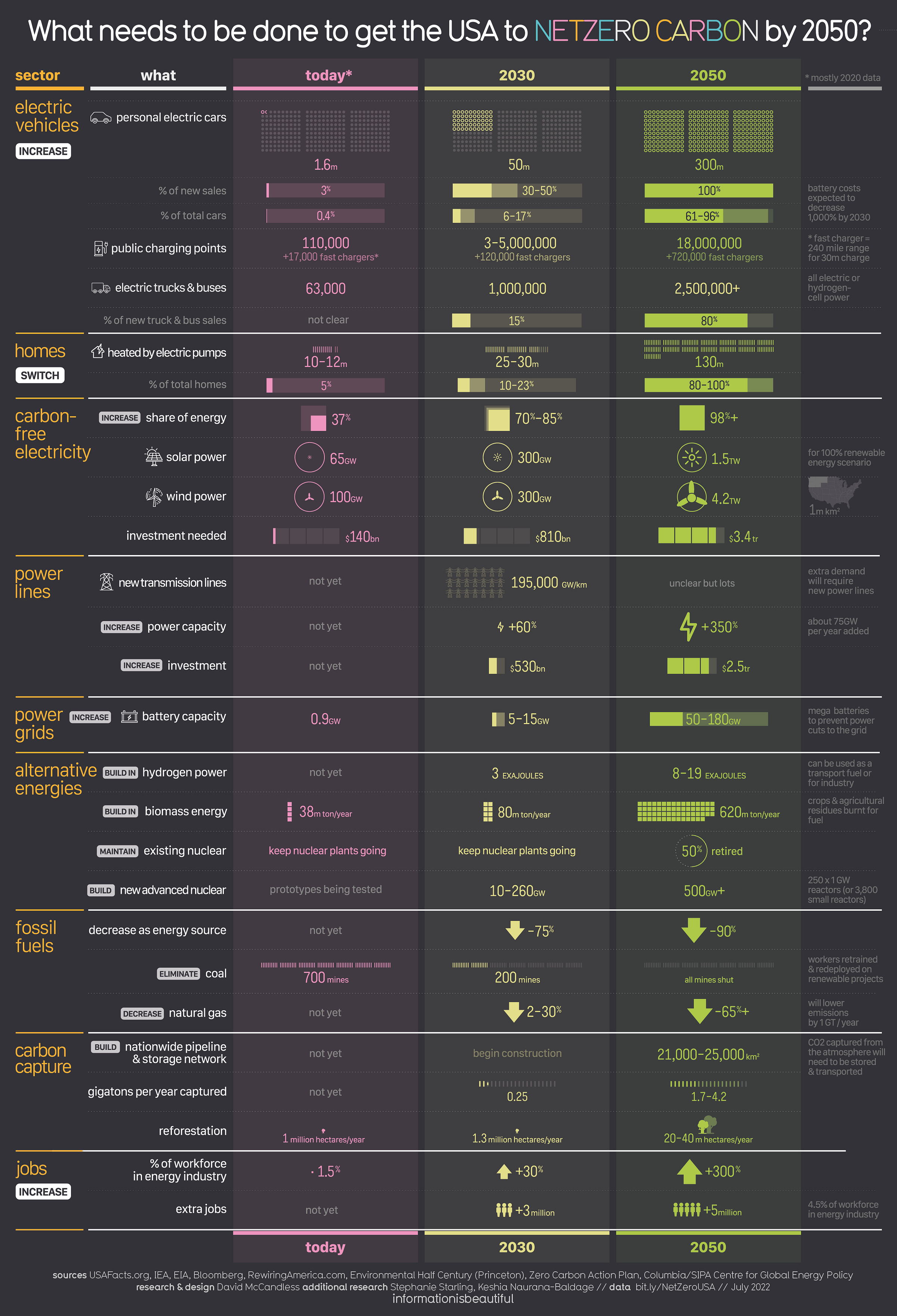USA's Path to Net Zero Carbon by 2050 and more...
[Issue #16] In our this week's issue, we will look at what it will take for USA to achieve net zero carbon by 2050, the 2022 Gender Inequality Index by UNDP and the most used emoji in every country!👇
Welcome to Insight Scoop, if you've been forwarded this post, I invite you to subscribe.
USA's path to Net Zero Carbon by 2050
Source: Information is Beautiful
Insights
To achieve net zero carbon by 2050, the U.S. -
Aims to have 50% of new vehicle sales be EVs by 2030 and all new vehicle sales be EVs by 2050.
Must have 80%+ of its buildings achieve zero-carbon levels by 2050. This involves improving insulation, adopting energy-efficient appliances, and transitioning to electric heating and cooling systems.
Needs to invest in workforce training and support programs to ensure a just transition for workers to a clean energy economy. It needs 5 million extra jobs to cater to clean energy demand.
In addition to the above, the country needs to heavily invest in building the infrastructure needed to store and transport clean energy.
Gender Inequality Index 2022
Creator: Kizley Benedict
Insights
The Gender Inequality Index (GII) is a measure of gender disparity that was introduced by the UNDP in 2010. It is a composite measure that quantifies the loss of achievement within a country due to gender inequality. It uses three dimensions to measure opportunity cost: reproductive health, empowerment, and labor market participation.
The global average GII value in 2022 was 0.47, indicating that women, on average, achieve only 53% of the outcomes that men do.
The Nordic countries, including Iceland, Sweden, Norway, Finland, and Denmark, have the lowest GII values in the world, indicating high levels of gender equality.
Sub-Saharan Africa (55.2%) has the highest GII values, indicating the most significant gender inequalities.
Most Used Emoji in Every Country
Source: Crossword Solver
Insights
The two most popular emojis worldwide are the face with tears of joy (😂) and the red heart (❤️), perhaps reflecting the universal emotions of happiness and love.
The face with tears of joy (😂) is the most common emoji in 75 countries, demonstrating its widespread appeal across cultures.
Emojis, while often conveying universal meanings, can also have different interpretations in different cultures. For instance, the clapping hands emoji (👏) suggests "making love" in China, while sending a thumbs up (👍) to a Greek person may be considered offensive.
… and that’s our Insight Scoop for this week!
If you enjoyed our this week’s visualizations, then do forward it to you friends and help this community grow :)





